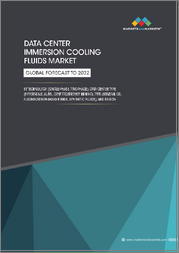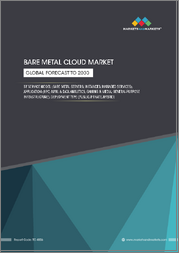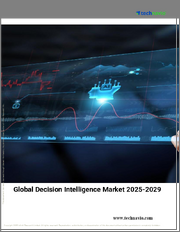
|
시장보고서
상품코드
1610771
세계의 의사결정 인텔리전스 시장 규모, 점유율, 성장 분석 : 제공 제품별, 유형별, 배포 모드별, 조직 규모별, 최종 용도별, 지역별 - 산업 예측(2024-2031년)Decision Intelligence Market Size, Share, Growth Analysis, By Offering, By Type, By Deployment Mode, By Organization Size, By End-Use, By Region - Industry Forecast 2024-2031 |
||||||
의사결정 인텔리전스 세계 시장 규모는 2022년 127억 7,000만 달러로 평가되었습니다. 2023년 148억달러에서 2031년 415억 8,000만 달러에 이르고, 예측 기간(2024-2031년) 동안 15.90%의 연평균 복합 성장률(CAGR)을 나타낼 전망입니다.
의사결정 인텔리전스 시장은 오늘날의 기술 환경에서 매우 중요한 역할을 담당하고 있으므로 크게 성장하고 있습니다. 기업이 데이터 중심의 접근 방식을 채택함에 따라 경쟁 우위를 확보하기 위해 디지털화와 AI 및 ML과 같은 첨단 기술의 통합에 대한 중요성이 커지고 있습니다. 의사결정 인텔리전스는 의사결정 지원, 관리, 복잡한 시스템 용도 등 다양한 측면을 지원하고 인간의 의사결정에 따른 위험을 줄이기 위한 중요한 툴로 자리매김하고 있습니다. 또한 데이터 분석의 복잡성이 증가함에 따라 기업은 어려운 시장 환경을 효과적으로 극복하기 위해 고급 의사결정 인텔리전스 툴을 도입해야 합니다. 머신러닝 기술의 확산에 힘입어 각 산업 분야에서 데이터베이스 인사이트에 대한 수요가 급증하면서 의사결정과 업무 효율성을 높이기 위한 강력한 의사결정 인텔리전스 프레임워크의 필요성이 더욱 강조되고 있습니다.
목차
서론
- 조사의 목적
- 조사 범위
- 정의
조사 방법
- 정보 조달
- 2차 데이터와 1차 데이터 방법
- 시장 규모 예측
- 시장의 전제조건과 제한
개요
- 세계 시장 전망
- 공급과 수요의 동향 분석
- 부문별 기회 분석
시장 역학과 전망
- 시장 개요
- 시장 규모
- 시장 역학
- 촉진요인과 기회
- 억제요인과 과제
- Porter의 산업 분석과 영향
- 경쟁 기업간 경쟁 관계
- 대체품의 위협
- 바이어의 교섭력
- 신규 진출업체의 위협
- 공급 기업의 교섭력
주요 시장 인사이트
- 주요 성공 요인
- 경쟁의 정도
- 주요 투자 기회
- 시장 에코시스템
- 시장의 매력 지수(2023년)
- PESTEL 분석
- 거시경제 지표
- 밸류체인 분석
- 가격 분석
- 기술의 진보
- 규제 상황
- 사례 연구
- 고객과 구매 기준 분석
- 무역 분석
- 원재료 분석
의사결정 인텔리전스 시장 규모 : 오퍼링별 & CAGR(2024-2031년)
- 시장 개요
- 플랫폼
- 솔루션
- 통합 레벨
- 통합 솔루션
- 스탠드얼론 솔루션
- 서비스
- 전문 서비스
- 컨설팅
- 도입 및 통합
- 시스템 및 정비
- 매니지드 서비스
의사결정 인텔리전스 시장 규모 : 유형별 & CAGR(2024-2031년)
- 시장 개요
- 의사결정 자동화
- 의사결정 강화
- 의사결정 지원시스템(DSS)
의사결정 인텔리전스 시장 규모 : 도입 모드별 & CAGR(2024-2031년)
- 시장 개요
- 클라우드
- 온프레미스
의사결정 인텔리전스 시장 규모 : 조직 규모별 & CAGR(2024-2031년)
- 시장 개요
- 중소기업
- 대기업
의사결정 인텔리전스 시장 규모 : 최종 용도별 & CAGR(2024-2031년)
- 시장 개요
- 은행/금융서비스/보험(BFSI)
- IT 및 통신
- 소매업 및 E-Commerce
- 헬스케어
- 제조업
- 정부
- 기타
의사결정 인텔리전스 시장 규모 : 지역별 & CAGR(2024-2031년)
- 북미
- 미국
- 캐나다
- 유럽
- 영국
- 독일
- 스페인
- 프랑스
- 이탈리아
- 기타 유럽 지역
- 아시아태평양
- 중국
- 인도
- 일본
- 한국
- 기타 아시아태평양
- 라틴아메리카
- 브라질
- 기타 라틴아메리카
- 중동 및 아프리카
- GCC 국가
- 남아프리카공화국
- 기타 중동 및 아프리카
경쟁 정보
- 상위 5사의 비교
- 주요 기업의 시장 포지셔닝(2023년)
- 주요 시장 기업이 채택한 전략
- 시장의 최근 동향
- 기업의 시장 점유율 분석(2023년)
- 주요 기업의 기업 개요
- 기업 개요
- 제품 포트폴리오 분석
- 부문별 점유율 분석
- 매출의 전년대비 비교(2021-2023년)
주요 기업 개요
- IBM
- Oracle
- Google(Alphabet)
- Amazon Web Services(AWS)
- Microsoft
- SAP SE
- SAS Institute
- FICO(Fair Isaac Corporation)
- H2O.ai
- DataRobot
- TIBCO Software
- Domo
- Aible
- KNIME
- Tableau Software(Salesforce)
- Altair Engineering
결론과 권장사항
LSH 24.12.20Global Decision Intelligence Market size was valued at USD 12.77 Billion in 2022 and is poised to grow from USD 14.80 Billion in 2023 to USD 41.58 Billion by 2031, growing at a CAGR of 15.90% in the forecast period (2024-2031).
The decision intelligence market is experiencing significant growth due to its pivotal role in today's technology landscape. As organizations increasingly adopt a data-centric approach, there is a heightened emphasis on digitalization and the integration of advanced technologies like AI and ML to gain competitive advantages. Decision intelligence supports various facets including decision support, management, and complex system applications, positioning it as a critical tool for mitigating risks associated with human decision-making. Moreover, the rising complexity of data analysis necessitates the deployment of sophisticated decision intelligence tools, enabling companies to navigate challenging market conditions effectively. The surge in demand across industries for data-driven insights, fueled by the proliferation of machine learning technology, further underscores the necessity of a robust decision intelligence framework for enhanced decision-making and operational efficiency.
Top-down and bottom-up approaches were used to estimate and validate the size of the Global Decision Intelligence market and to estimate the size of various other dependent submarkets. The research methodology used to estimate the market size includes the following details: The key players in the market were identified through secondary research, and their market shares in the respective regions were determined through primary and secondary research. This entire procedure includes the study of the annual and financial reports of the top market players and extensive interviews for key insights from industry leaders such as CEOs, VPs, directors, and marketing executives. All percentage shares split, and breakdowns were determined using secondary sources and verified through Primary sources. All possible parameters that affect the markets covered in this research study have been accounted for, viewed in extensive detail, verified through primary research, and analyzed to get the final quantitative and qualitative data.
Global Decision Intelligence Market Segmental Analysis
Global Decision Intelligence Market is segmented by Offering, Type, Deployment Mode, Organization Size, End-Use and region. Based on Offering, the market is segmented into Platform, Solution, and Services. Based on Type, the market is segmented into Decision automation, Decision Augmentation, and Decision Support Systems (DSS). Based on Deployment Mode, the market is segmented into Cloud, and On-Premises. Based on Organization Size, the market is segmented into Below Small & Medium Enterprises, Large Enterprises. Based on End-Use, the market is segmented into BFSI, IT & Telecom, Retail & Ecommerce, Healthcare, Manufacturing, Government, and Others. Based on region, the market is segmented into North America, Europe, Asia Pacific, Latin America and Middle East & Africa.
Driver of the Global Decision Intelligence Market
The Global Decision Intelligence market is primarily driven by the increasing demand for data-driven decision-making. This innovative discipline focuses on integrating advanced technologies, systematic methodologies, and human expertise to enhance the decision-making processes in organizations. By adopting these advanced analytical capabilities, businesses can achieve significant and favorable results in both decision-making and operational workflows. Consequently, the market for decision intelligence continues to expand as there is a rising investment in artificial intelligence and Internet of Things (IoT) technologies, alongside the ongoing advancements that facilitate the generation of valuable business insights, strengthening the overall landscape of decision intelligence.
Restraints in the Global Decision Intelligence Market
One significant restraint in the Global Decision Intelligence market stems from privacy and security concerns. Organizations gather data through multiple channels and perform extensive analyses to maximize its value, often collecting sensitive information such as personal preferences, authorization details, and up-to-date contact information. Given this responsibility, organizations must prioritize data security to maintain customer trust. However, the increasing incidence of cyber-attacks poses a substantial risk, leading to hesitance among various industries in fully adopting these technologies. The constant threat of data breaches ultimately limits the application of decision intelligence, as businesses are wary of the potential repercussions on consumer privacy and trust.
Market Trends of the Global Decision Intelligence Market
The Global Decision Intelligence market is witnessing a notable trend towards the increased adoption of predictive analytics, as organizations leverage both current and historical data to enhance forecasting capabilities. This shift empowers companies to make informed, data-driven decisions, enabling them to capitalize on emerging opportunities while mitigating potential risks. As businesses recognize the significant competitive advantages afforded by accurate predictions, the demand for sophisticated predictive analytics tools is poised for substantial growth. Consequently, this trend is expected to fuel the expansion of the decision intelligence market, as firms strive to enhance their strategic decision-making processes in an ever-evolving business landscape.
Table of Contents
Introduction
- Objectives of the Study
- Scope of the Report
- Definitions
Research Methodology
- Information Procurement
- Secondary & Primary Data Methods
- Market Size Estimation
- Market Assumptions & Limitations
Executive Summary
- Global Market Outlook
- Supply & Demand Trend Analysis
- Segmental Opportunity Analysis
Market Dynamics & Outlook
- Market Overview
- Market Size
- Market Dynamics
- Driver & Opportunities
- Restraints & Challenges
- Porters Analysis & Impact
- Competitive rivalry
- Threat of substitute
- Bargaining power of buyers
- Threat of new entrants
- Bargaining power of suppliers
Key Market Insights
- Key Success Factors
- Degree of Competition
- Top Investment Pockets
- Market Ecosystem
- Market Attractiveness Index, 2023
- PESTEL Analysis
- Macro-Economic Indicators
- Value Chain Analysis
- Pricing Analysis
- Technological Advancement
- Regulatory Landscape
- Case Studies
- Customer & Buying Criteria Analysis
- Trade Analysis
- Raw Material Analysis
Global Decision Intelligence Market Size by Offering & CAGR (2024-2031)
- Market Overview
- Platform
- Solution
- Integration Level
- Integrated Solutions
- Standalone Solutions
- Services
- Professional Services
- Consulting
- Deployment & Integration
- System & Maintenance
- Managed Services
Global Decision Intelligence Market Size by Type & CAGR (2024-2031)
- Market Overview
- Decision automation
- Decision Augmentation
- Decision Support Systems (DSS)
Global Decision Intelligence Market Size by Deployment Mode & CAGR (2024-2031)
- Market Overview
- Cloud
- On-Premises
Global Decision Intelligence Market Size by Organization Size & CAGR (2024-2031)
- Market Overview
- Small & Medium Enterprises
- Large Enterprises
Global Decision Intelligence Market Size by End-Use & CAGR (2024-2031)
- Market Overview
- BFSI
- IT & Telecom
- Retail & Ecommerce
- Healthcare
- Manufacturing
- Government
- Others
Global Decision Intelligence Market Size & CAGR (2024-2031)
- North America, (Offering, Type, Deployment Mode, Organization Size, End-Use)
- US
- Canada
- Europe, (Offering, Type, Deployment Mode, Organization Size, End-Use)
- UK
- Germany
- Spain
- France
- Italy
- Rest of Europe
- Asia-Pacific, (Offering, Type, Deployment Mode, Organization Size, End-Use)
- China
- India
- Japan
- South Korea
- Rest of Asia Pacific
- Latin America, (Offering, Type, Deployment Mode, Organization Size, End-Use)
- Brazil
- Rest of Latin America
- Middle East & Africa, (Offering, Type, Deployment Mode, Organization Size, End-Use)
- GCC Countries
- South Africa
- Rest of Middle East & Africa
Competitive Intelligence
- Top 5 Player Comparison
- Market Positioning of Key Players, 2023
- Strategies Adopted by Key Market Players
- Recent Developments in the Market
- Company Market Share Analysis, 2023
- Company Profiles of All Key Players
- Company Details
- Product Portfolio Analysis
- Company's Segmental Share Analysis
- Revenue Y-O-Y Comparison (2021-2023)
Key Company Profiles
- IBM
- Company Overview
- Business Segment Overview
- Financial Updates
- Key Developments
- Oracle
- Company Overview
- Business Segment Overview
- Financial Updates
- Key Developments
- Google (Alphabet)
- Company Overview
- Business Segment Overview
- Financial Updates
- Key Developments
- Amazon Web Services (AWS)
- Company Overview
- Business Segment Overview
- Financial Updates
- Key Developments
- Microsoft
- Company Overview
- Business Segment Overview
- Financial Updates
- Key Developments
- SAP SE
- Company Overview
- Business Segment Overview
- Financial Updates
- Key Developments
- SAS Institute
- Company Overview
- Business Segment Overview
- Financial Updates
- Key Developments
- FICO (Fair Isaac Corporation)
- Company Overview
- Business Segment Overview
- Financial Updates
- Key Developments
- H2O.ai
- Company Overview
- Business Segment Overview
- Financial Updates
- Key Developments
- DataRobot
- Company Overview
- Business Segment Overview
- Financial Updates
- Key Developments
- TIBCO Software
- Company Overview
- Business Segment Overview
- Financial Updates
- Key Developments
- Domo
- Company Overview
- Business Segment Overview
- Financial Updates
- Key Developments
- Aible
- Company Overview
- Business Segment Overview
- Financial Updates
- Key Developments
- KNIME
- Company Overview
- Business Segment Overview
- Financial Updates
- Key Developments
- Tableau Software (Salesforce)
- Company Overview
- Business Segment Overview
- Financial Updates
- Key Developments
- Altair Engineering
- Company Overview
- Business Segment Overview
- Financial Updates
- Key Developments



















